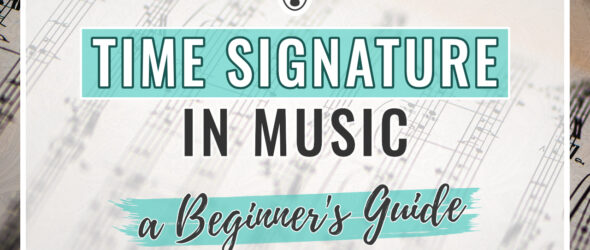
One of the most foundational ideas you should learn as a beginning musician is how to read the time signature in music. The time signature, or meter, tells us the number of beats per measure and organizes the sound on the page of sheet music.
To play written music, you’ll want to understand what these numbers at the beginning of the piece mean. Time signatures aren’t always the same from song to song, and can be quite nuanced.
Yes, time signatures are an element of music theory, but you don’t need to be afraid of it! Let’s dive right in.
What Is a Time Signature?
A time signature is the two numbers stacked on top of each other right after the clef at the start of a piece of music. The numbers dictate how many beats are in one measure of music, and what type of note value receives one beat.
Time signatures can also be referred to as meters. I’ll use the terms interchangeably in this article.
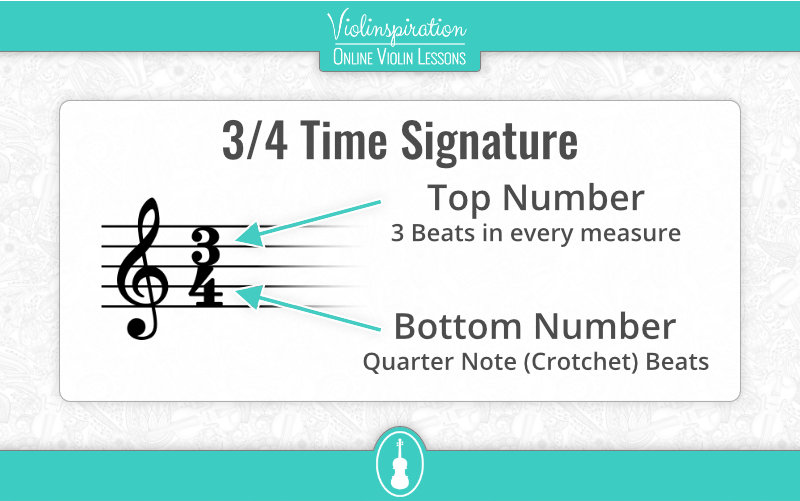
How Time Signature Affects Measures in a Piece
Music is divided into measures, also called bars. The bar line (the divider between two measures) is a vertical line through the staff and shows us which notes belong to a given bar.
A measure of music contains as many beats as the top number of the time signature indicates. Measures throughout one piece of music will have the same number of beats within them unless the time signature changes within the piece.
How Time Signature Affects Note Values
Note value refers to the number of beats or counts a specific note gets. Note values include eighth notes, quarter notes, half notes, and whole notes, among others.
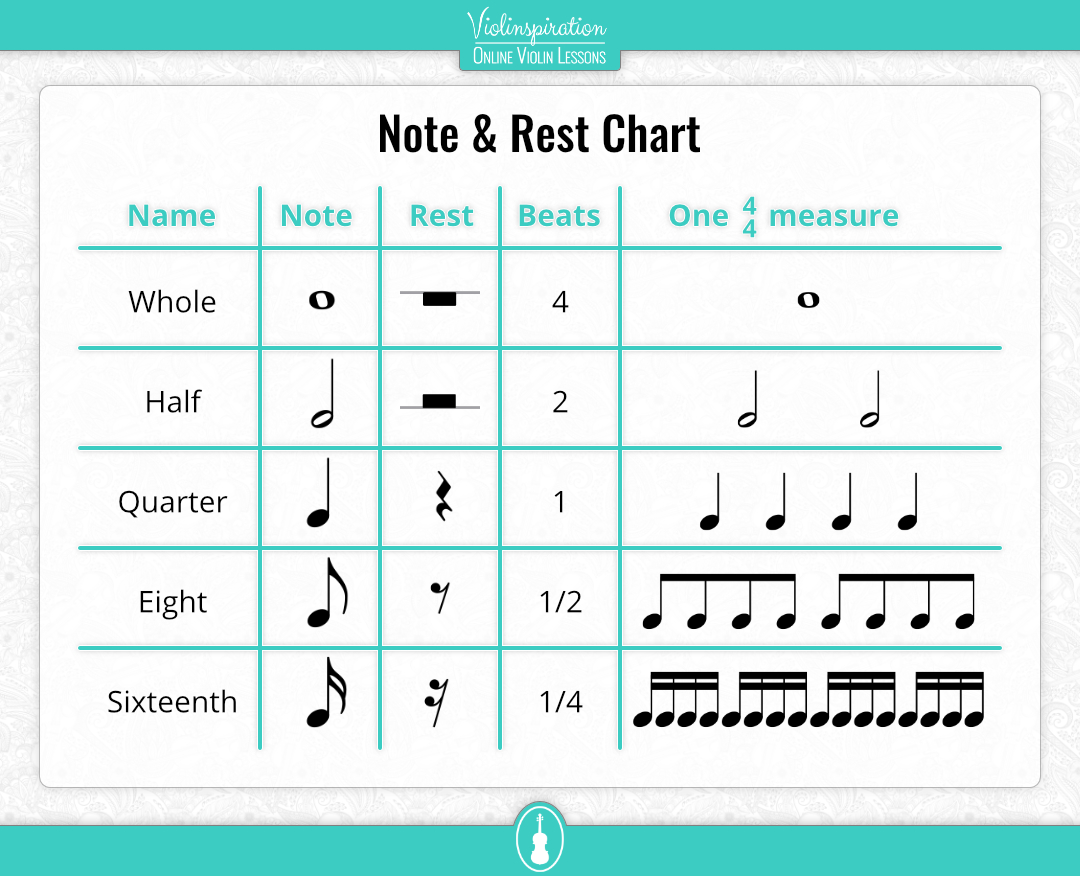
The bottom number of the time signature will tell us which note value receives 1 beat within the music.
No matter what the time signature of a given piece is, the relationship between note values is always the same:
- eighth notes are twice as fast as quarter notes,
- two quarter notes fit within one half note,
- two half notes equal one whole note.
These relationships never change, even if the time signature changes.
If you aren’t familiar with note values yet, I recommend taking the time to read about them in my guide to reading music before continuing this article. Time signatures expand on rhythm, and you’ll be a little confused here if you haven’t encountered note values or rhythm yet.
How to Read a Time Signature
The time signature appears right after the clef, although in some cases you may see sharps or flats between the clef and the time signature (that would be the key signature – click here to read more about them). The time signature consists of two numbers stacked on top of each other, and each number tells us a different piece of information.
The Top Number
The top number of a time signature tells us how many beats are in each measure. Measures are always the same length unless you see another time signature telling you otherwise.
When you start learning music, you’ll most likely start by reading music that has either 3 or 4 beats per measure. These are really common! If you’d like to practice them on easy examples, take a look at lessons 1 and 2 in the Note Reading course (Julia’s Violin Academy members only).
The Bottom Number
The bottom number of the time signature tells us what type of note value equals one beat.
- A 4 on the bottom means a quarter note receives one beat
- An 8 on the bottom means an eighth note receives one beat
- A 2 on the bottom means a half note receives one beat
- A 1 on the bottom means a whole note receives one beat
As you’re getting started, most music you play will probably have a 4 at the bottom of the time signature. This means you’ll have four quarter note beats per measure.
Examples of Time Signatures
4/4
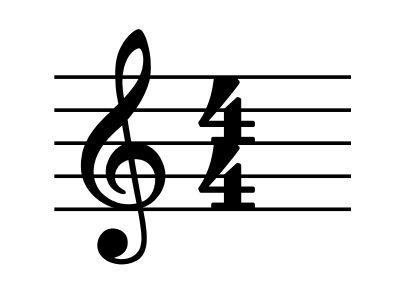
4/4 is the most common time signature. For this reason, it’s sometimes written as a “c”, rather than two numbers. The “c” stands for “Common Time.”
In 4/4, there are four quarter note beats per measure, meaning the quarter note receives one beat.
In this case, four quarter notes in a row take up a full measure: they equal four beats, added up.
Songs in 4/4
- “Spring” from The Four Seasons by Vivaldi
- We Will Rock You by Queen
- Photograph by Ed Sheeran
3/4
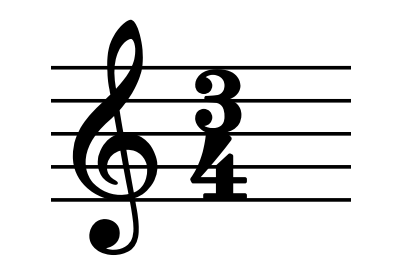
Another very common time signature you’ll see is 3/4. 3/4 has three beats in each measure, and again, has quarter note beats.
In this case, a full measure could contain three quarter notes, which add up to three beats. After three beats, you’ll see a bar line and begin a new measure.
Songs in 3/4
- “Merry Go Round of Life” from Howl’s Moving Castle by Joe Hisaishi
- “Edelweiss” from The Sound Of Music by Rogers and Hammerstein
- Waltz No. 2 by Shostakovich
The Two Formats of Time Signatures
There are two ways to format time signatures: the first, most common, is standard number-based time signatures. The other format is symbolic time signatures.
Number-based Time Signatures
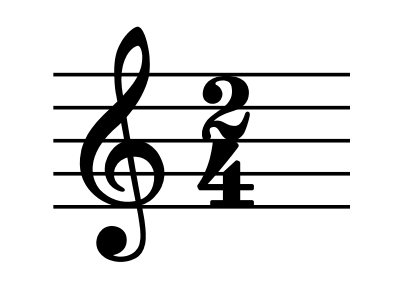
A typical time signature consists of two numbers, stacked on top of each other. Again, the top number tells us the beats per measure, and the bottom number tells us what type of note equals one beat.
Symbolic Times Signatures
There are two time signatures that can be notated with a single symbol, rather than with two numbers. We can classify this type as symbolic time signatures. The two meters in question are called common time and cut time.
Common Time
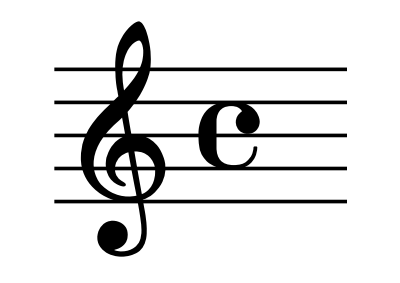
Common time is the same as 4/4 but just written with a “c” instead of using the typical numbers. There’s no difference between common time and 4/4, except the way the signature itself is written. The two meters are played the same way and interpreted identically. There are still four quarter note beats in common time, just like there are in 4/4.
Cut Time
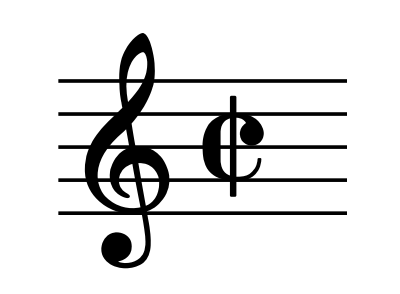
Cut time is the same as 2/2, and can also be referred to as “alla breve.” The cut time symbol looks like a cent sign (¢) – a “c” with a vertical line through it.
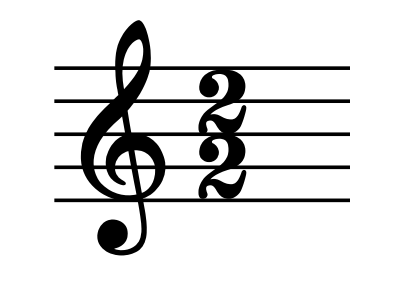
In 2/2 or cut time, there are two beats per measure, and half notes each receive one beat. Therefore, there are two half-note beats per measure.
You might assume that the music is in 4/4 if you were to just glance at it without looking at the time signature. However, there are two half-note beats per measure, rather than four quarter-note beats per measure.
If you see four quarter notes in a measure of 2/2, they each receive half a beat. So instead of counting “1-2-3-4,” you should count “1 & 2 &” instead.
Simple, Compound, and Complex Time Signatures
Diving deeper, time signatures can be categorized by how each beat can be broken down. The three categories are simple, compound, and complex time signatures.
Simple Time Signatures
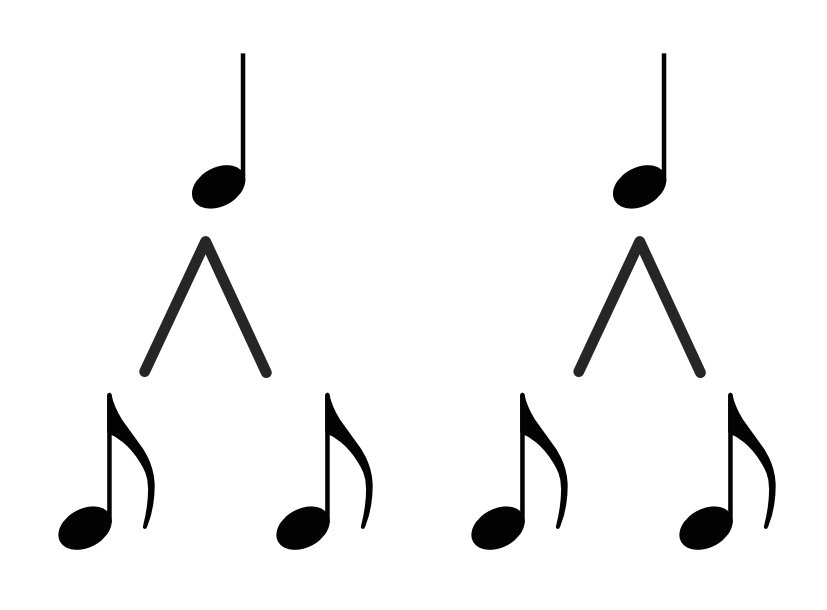
A simple time signature in music is a standard meter like 4/4, 3/4, or 2/4. They’re relatively simple (especially compared to the other two types that we’ll discuss in just a moment) and are quite common.
A simple time signature contains beats that can be broken into groups of two notes. A simple time signature will always have a 2, 3, or 4 on the top (meaning the number of beats per measure).
Compound Time Signatures
Compound time signatures consist of meters with 6, 9, or 12 beats per measure. In these time signatures, we can divide each big beat into three notes.
The “big beats” consist of dotted quarter notes, which are made up of three eighth notes each. This is what gives these particular meters the “compound” name.
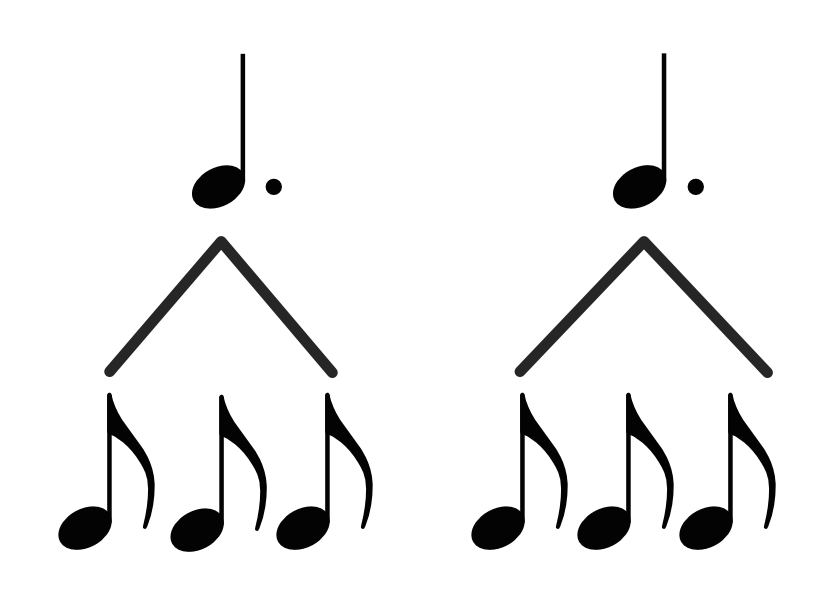
Here’s how a few popular compound time signatures work:
6/8
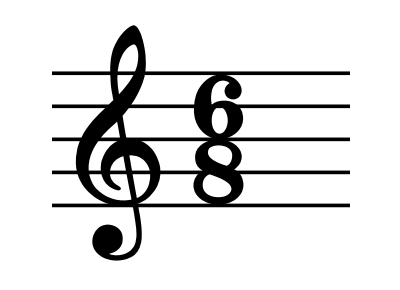
6/8 is the most common compound time signature. Music in 6/8 can have measures of six eighth notes or measures of two bigger beats of dotted quarter notes (equaling three eighth notes in total).
We can either play this music with six eighth note beats (usually at a slower tempo) or with two larger dotted quarter note beats (usually at a faster tempo).
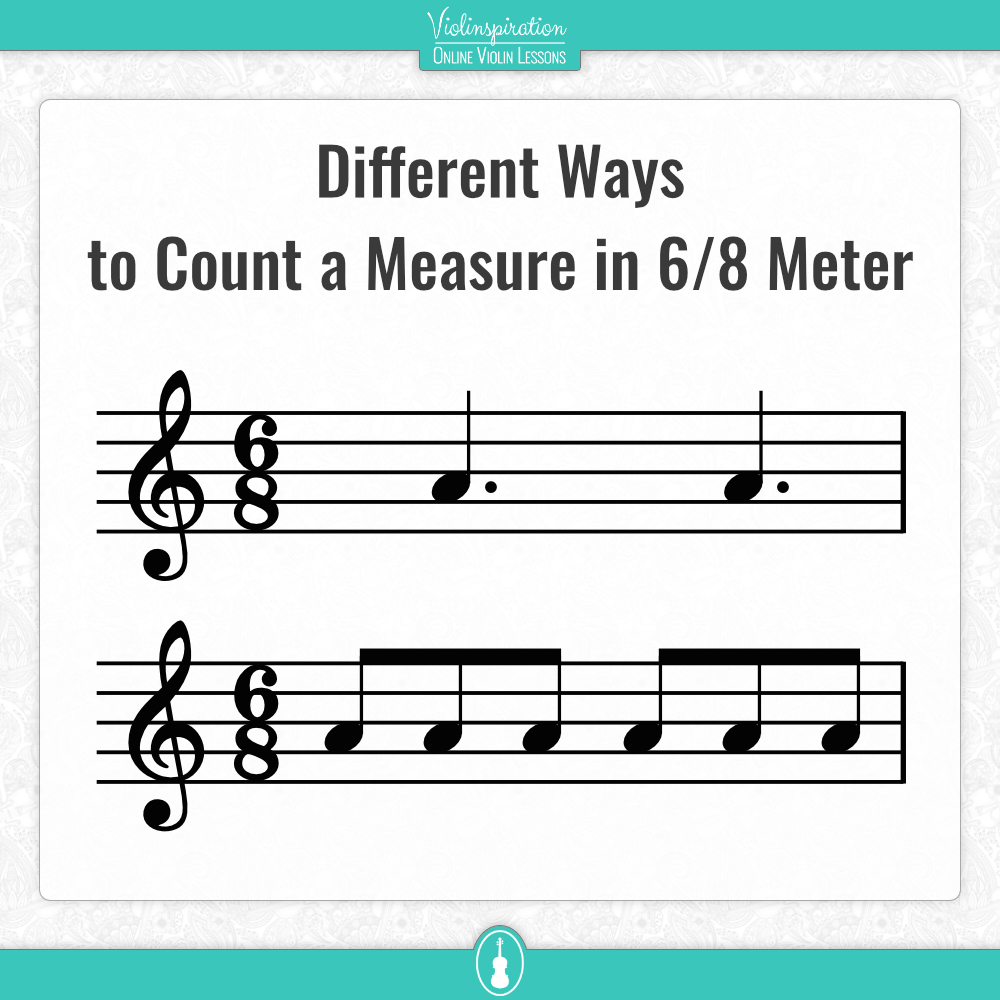
9/8
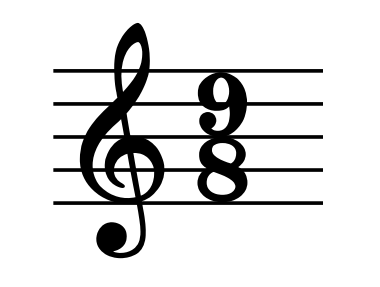
Our second compound time signature is 9/8. In a measure of 9/8, we might see nine eighth notes. We could count nine slow to medium-paced beats, or count in a faster three, in groups of three eighth notes.
12/8

12/8 is another compound time signature. We usually count this meter as four dotted quarter-note beats, all made up of three eighth notes per beat.
Other compound time signatures
Other, less common compound time signatures include 6/2, 6/4, 9/2, 9/4, 12/2, 12/4, and even 12/16.
Complex Time Signatures
Complex time signatures are more rare, but do pop up in difficult music, and more often in non-Western classical music. These are sometimes called “odd meters”, and consist of beats that can be divided in either a simple or compound way.
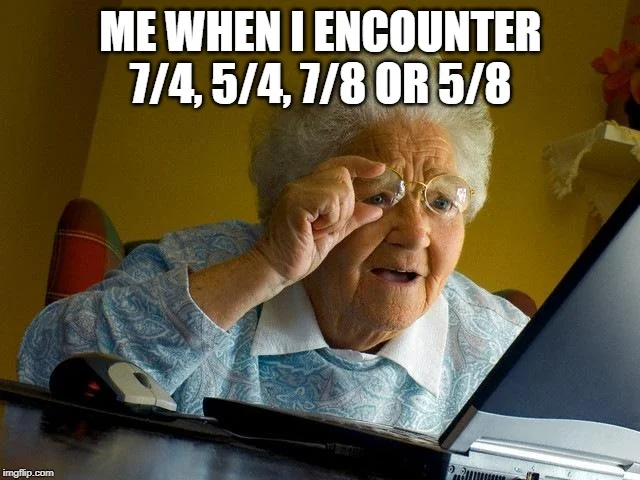
5/8
Our first complex meter is 5/8. One beat will be simple, and the other is compound (the order doesn’t matter).

7/8
7/8 is our next complex time signature. This meter can be divided into a variety of combinations, which keeps players on their toes! 7/8 will always consist of two simple beats and one compound beat, but again, the order of the types of beat divisions doesn’t matter.
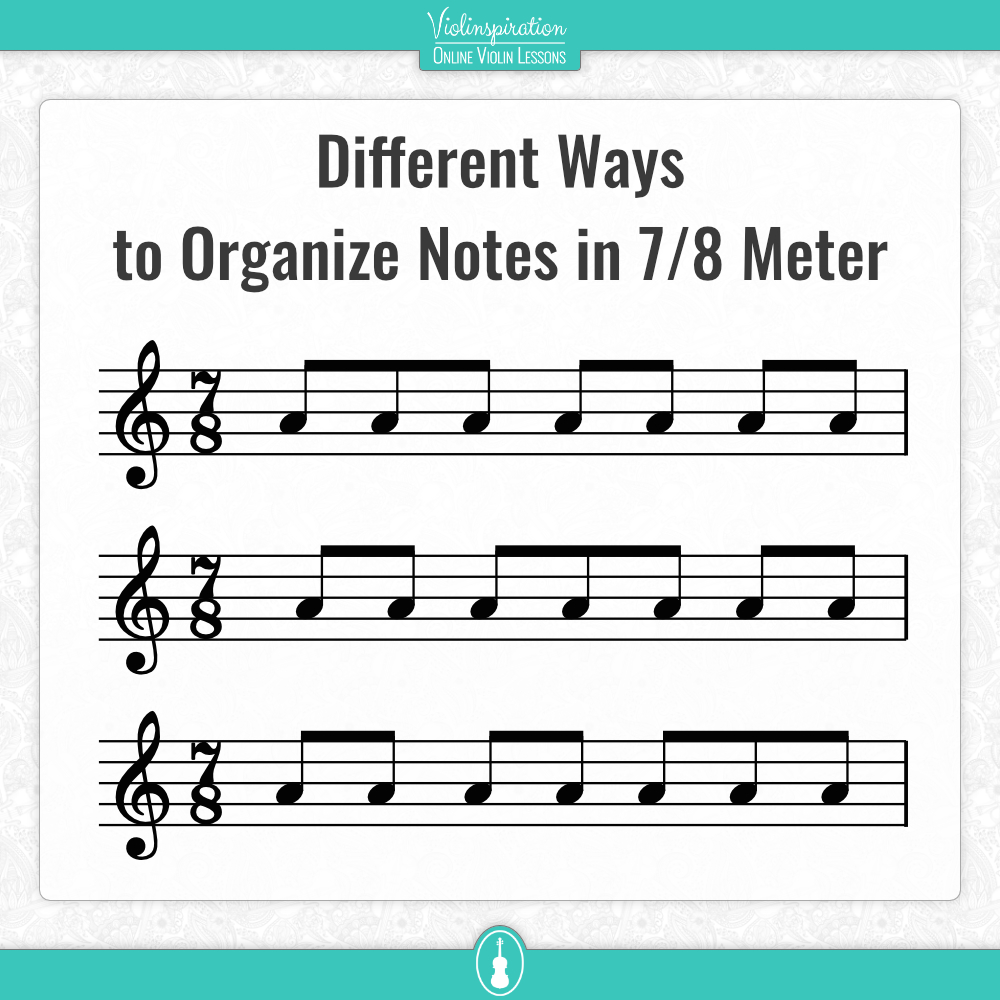
Other complex time signatures
8/8, 10/8, and 11/8 are some other complex meters. They all include a mix of simple and compound beats within each measure.
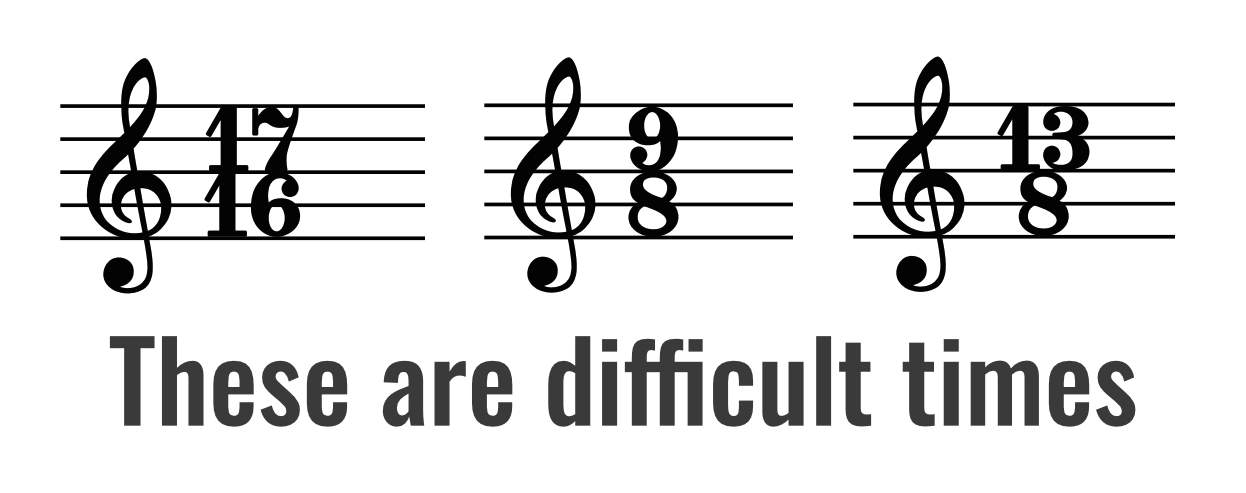
Duple, Triple, and Quadruple Time Signatures
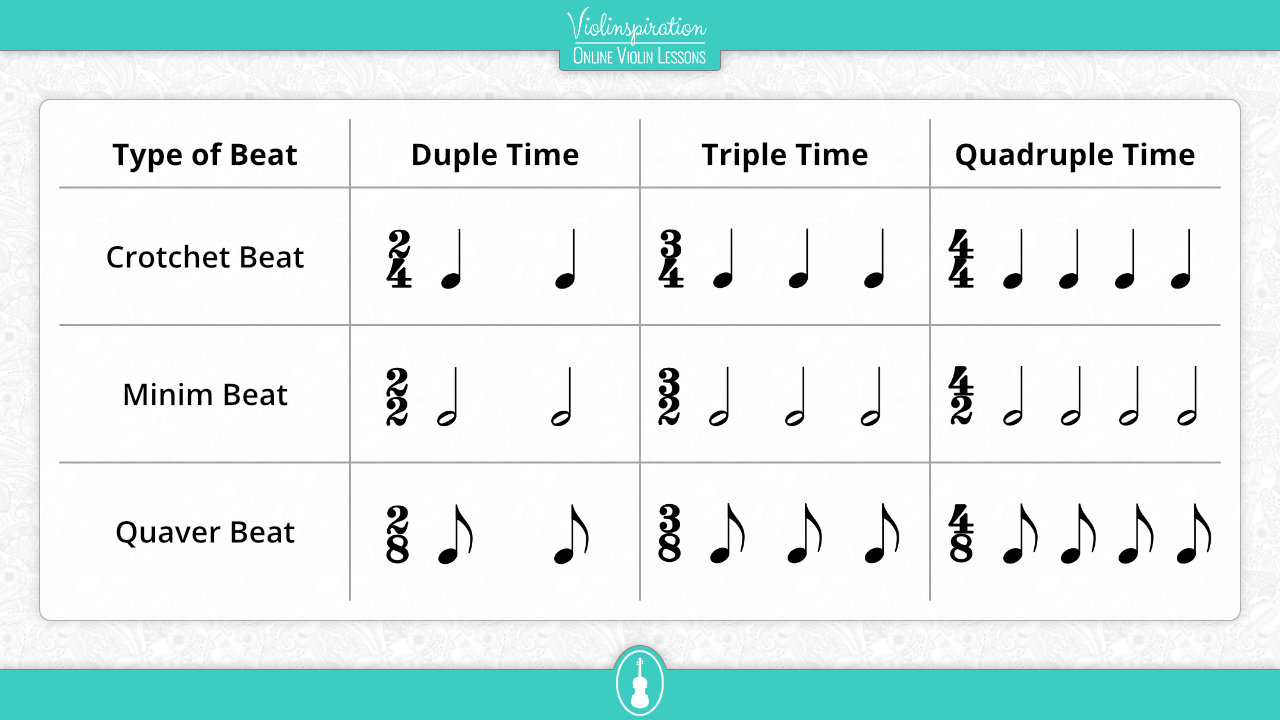
Another way of classifying time signatures is through the number of beats per measure, disregarding the type of note value that gets the beat.
Duple time signatures contain two beats per measure and include 2/2, 2/4, 6/8, and cut time.
A triple time signature is made up of three beats. Examples include 3/4, 3/2, and 9/8.
A quadruple time signature contains four beats per measure. 4/4, 12/8, and 4/2 are examples of quadruple time signatures.
Strong and Weak Beats
Did you know there’s actually a hierarchy of beats within each measure of music? Take a listen to a bit of this waltz:
This piece is in 3/4. Do you hear how each beat 1 is heavier than the other beats? If you count along, you might sing “ONE-two-three, ONE-two-three” over and over again. This is a great example of strong vs. weak beats!
In some types of music, we might want to make certain beats feel stronger, or heavier than others. These are usually called the “important” beats of the measure, and they tend to follow specific patterns based on the unique time signature.
Counting the 4/4 Meter
In 4/4 time, beats 1 and 3 are usually heavier than beats 2 and 4. If you’re listening to a song in 4/4 and hear chord changes, it’s very likely that those chord changes are happening on beats 1 and 3, which really helps emphasize them.
If you’re singing the strong and weak beats, 4/4 will sound something like this:
“ONE two THREE four”
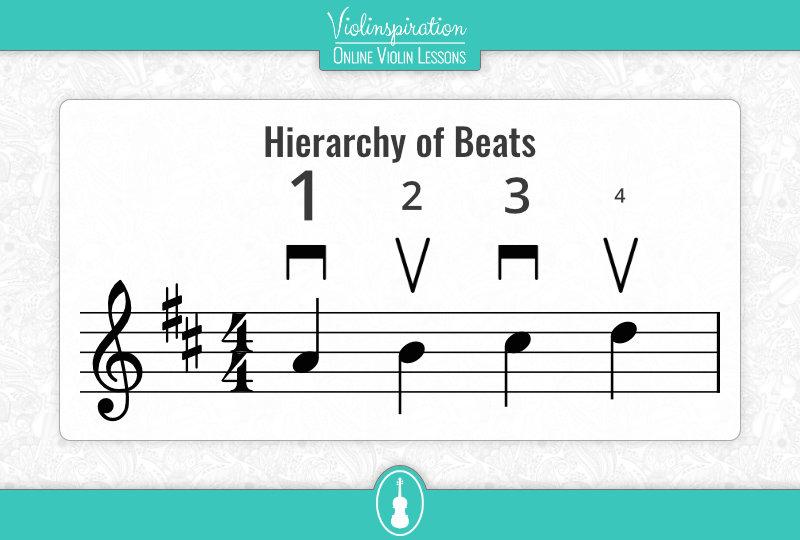
Counting the 3/4 Meter
3/4 has one strong beat: beat 1. This is really emphasized in most waltzes (a dance in 3/4 time). The bass instrument will play a heavy first beat, and you might hear two higher, quieter notes, on beats 2 and 3. This helps the dancers feel the music and perform the dance moves at just the right time.
Again, 3/4’s beat hierarchy sounds like:
“ONE two three”
Counting the 2/4, 2/2, or Cut Time
In a measure of 2/4, 2/2, or cut time, the “most important” beat of the measure is beat 1.
Think of a famous march, like Stars and Stripes Forever. This march is written in cut time, and while you might hear the drums play on every beat (remember, in the cut time we have a half-note beat), the first beat of every measure is the heaviest.
If you sing the strong and weak beats in a duple time signature, it would sound like:
“ONE two”
Counting the 6/8 Time
6/8 is a compound meter, so each big beat (dotted quarter note) can be broken down into three eighth notes. A common type of song with a 6/8 time signature is an Irish jig.
Here’s an example of a jig:
Did you hear where the audience was clapping? They clapped the big beats, rather than clapping on every single eighth note.
The strong and weak beats in 6/8 are:
ONE two three FOUR five six
Or: ONE and a TWO and a
Frequently Asked Questions
I completely understand if you still have some questions about the meter! Here are a few very common inquiries.
Can a piece of music change time signatures?
Yes, a piece of music can change the time signature. This is common in long, complex pieces of music. You’ll simply see a new time signature in the music, wherever the switch takes place.
Most times, when we change time signatures, the beat will stay the same. You might see a metronome marking at the time change, or (note value) = (note value).
For example, if your music goes from 4/4 to 6/8, you might see a note that says eighth note = eighth note. That means the tempo of the eighth note stays exactly the same between the two time signatures.
What’s the difference between a meter and a time signature?
Meter and time signature are synonyms and can be used interchangeably. “Time signature” is a little more formal, and is probably used a little more frequently than “meter.”
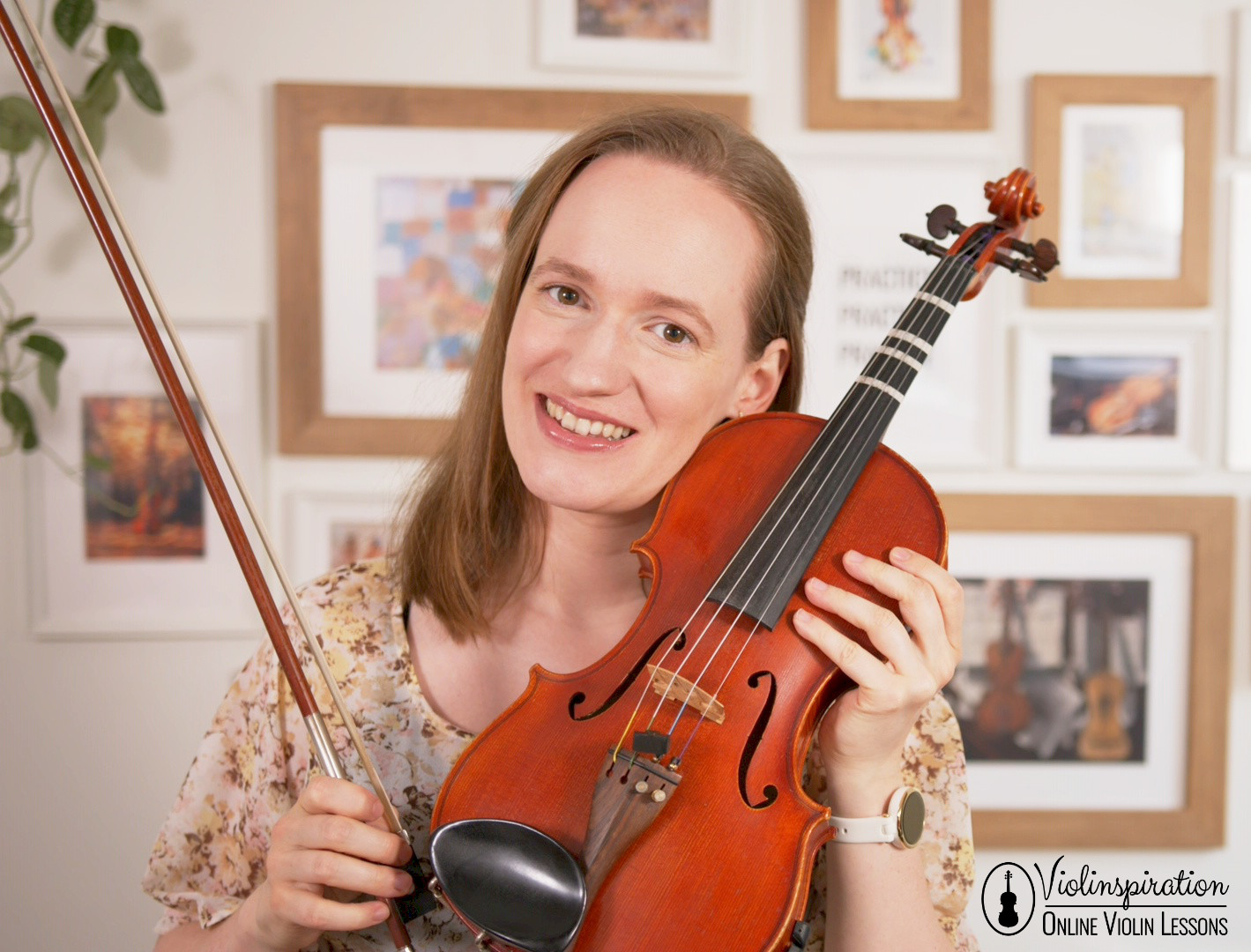
Is there a difference between meter and rhythm?
Yes! The meter (time signature) is the way we organize time within the music. It tells us how many beats are in each measure, and what type of note gets one beat. Rhythm is the relationship between individual notes. It’s the unique sound created by notes equaling different (or even the same) lengths of time.
In short: time signature = organization; rhythm = relationship between note values.
What is a downbeat?
A downbeat is the first beat of a given measure. If you start a piece of music with a pickup note, the first beat of the first full measure of music is called the downbeat.
The term “downbeat” further emphasizes the hierarchy of beats: as the first beat of a measure, the downbeat is always heavy, or strong.
Are there any time signatures that sound similar to each other?
Yes, for example, 2/4 and 4/4 time signatures may sound similar, and you might mistake 12/8 as 6/8. You might notice that one time signature that might be confused with another has the same division of notes, or is grouped in a similar way (such as two simple time signatures or two compound time signatures).
It can be difficult to pinpoint the exact meter of a song just by listening, without looking at printed sheet music. While you might understand where the beats are, you might have to guess how many beats are within just one measure.
If recognizing time signatures by ear is a skill you’d like to improve, try listening to a song and guessing the meter. Then look up the sheet music and find the time signature. Did you get it right?
What’s the difference between 4/4 and 12/8?
Both 4/4 and 12/8 are quadruple time signatures, meaning that there are four beats per measure in each meter. However, 4/4 is a simple time signature: each beat can be divided into two (eighth notes). 12/8, on the other hand, is a compound time signature, with beats that can be divided into three (eighth notes).
You may ask now: But why might a composer use 12/8 instead of 4/4 with triplets?
Imagine reading a long piece of music full of triplet markings. It might feel a bit fatiguing! Writing in 12/8, rather than 4/4 with triplet eighth notes is more efficient, and gives the piece a very uniform feel.
How do I change between simple and compound time signatures?
In difficult music, you might encounter an excerpt that switches between time signatures such as 2/4 and 6/8. There are almost always extra directions included between the first meter change, such as (eighth note = eighth note). This means that the eighth note has the same tempo in both time signatures.
So, if you switch from 2/4 to 6/8 and see (eighth note = eighth note), the speed of the eighth note stays the same, and you can count “1 & 2 & – 1 2 3 4 5 6.”
Why are there two notes on the top of my time signature?
Once in a while, you might see what looks like an addition problem on top of a time signature. It could look like (3+4/4). This time signature equals 7/4 and shows what the common beat groups will be throughout the piece. In this case, the grouping is: dotted quarter, quarter, quarter.
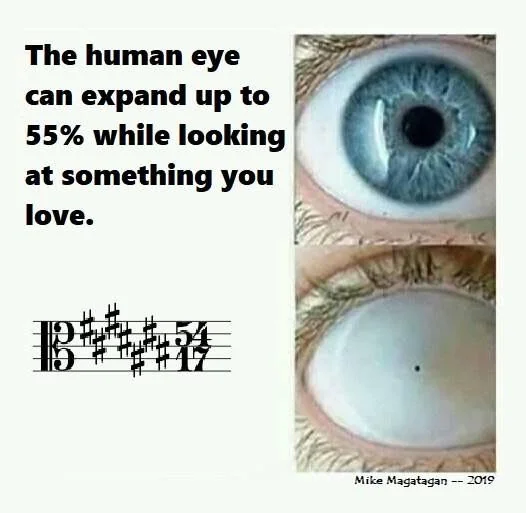
Learn Even More…
Time signature is one of the foundations of music, and is an essential bit of music theory to learn as you begin reading sheet music and playing an instrument.
Want to learn more? I have many articles on music theory basics, such as violin note reading, key signatures, and the names of scale degrees.
I hope you’ll read more on a topic that interests you!























